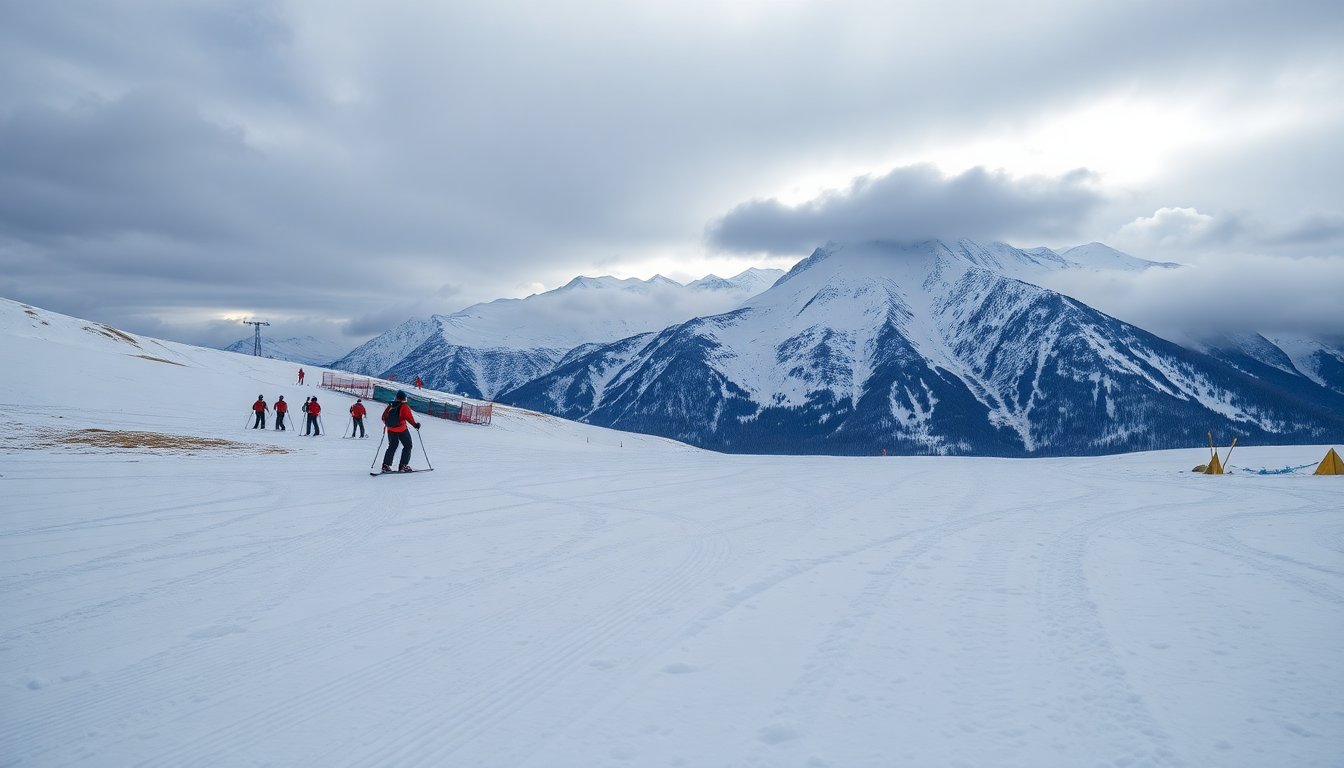Table of Contents
The impact of climate change on winter sports
As the climate crisis unfolds, winter sports athletes face a challenging reality. The beauty of snow-covered mountains is increasingly overshadowed by the warming planet. Marion Thénault, a freestyle skier, exemplifies the concerns of her peers who depend on winter conditions for optimal performance. Recent experiences have drawn attention to the stark contrast between natural snow and artificial alternatives. Thénault and her fellow athletes are now urging for immediate action to safeguard their beloved sports.
Environmental challenges in winter sports
Marion Thénault, a professional skier with seven years of experience, highlights the duality of her profession. The breathtaking snowy landscapes that define winter sports now stand in stark contrast to venues where green grass replaces the expected white blanket. This change, driven by a shifting climate, is evident during competitions. Thénault has competed on mountains where artificial snow is the only option, leading her to question the authenticity of her surroundings. “It just feels wrong to be there,” she stated, underscoring the dissonance of competing in such altered conditions.
Impact of climate change on athletic performance
The effects of a warming climate are not merely aesthetic; they significantly challenge athletic performance. Thénault highlights that melting snow disrupts the vital takeoff and speed needed for aerial skiing. Each jump demands precise calculations and adjustments, requiring athletes to adapt to shifting conditions. “Using dry ice can create a jump that holds, but it can be slippery and more dangerous,” she stated. This variability can lead to unpredictable outcomes, increasing risks for athletes.
The shrinking venues for winter sports
UPDATE AT 11:00 AM – A study by the International Olympic Committee reveals a concerning decline in locations suitable for hosting the Winter Olympic and Paralympic Games. This research indicates that only half of the previous 21 host cities will remain viable by the 2050s if current trends continue. For athletes like Thénault, this situation signifies more than just a reduction in competition sites; it poses a significant existential threat to their sports and the natural beauty of winter.
Activism among athletes
Thénault, inspired by her Olympic experiences, has emerged as a prominent advocate for climate action. Following her bronze medal win at the Beijing Olympics, she was struck by the contrast between the vibrant green fields and the artificial snow, prompting her to delve deeper into the climate crisis. Thénault is now dedicated to achieving a carbon-neutral journey to the next Olympics, working closely with experts to assess her carbon footprint as an athlete.
In a notable initiative, Thénault joined 76 fellow Canadian athletes in the climate advocacy group Protect Our Winters. Together, they sent a letter to Prime Minister Mark Carney, calling for urgent climate action. Their message emphasizes that amid various pressing challenges, Canada must prioritize climate change.
Global implications and future actions
The International Olympic Committee is taking significant steps to address climate concerns. It has pledged to cut its emissions by 50 percent by 2030, in line with the Paris Agreement. This new direction includes a shift away from constructing new venues that often remain unused after the Games.
For example, the Summer Games in Paris will utilize 95 percent existing or temporary venues. This approach is a clear move towards more sustainable practices in organizing international sporting events.
Leadership in sustainability efforts
The discussion surrounding sustainability is intensifying, with candidates for the International Olympic Committee (IOC) presidency highlighting climate initiatives. Johan Eliasch, a key candidate and president of the International Ski and Snowboard Federation, has proposed a plan to rotate the Winter Olympic Games among a limited number of permanent venues. He argues that this strategy is essential for the future of winter sports, emphasizing, “It’s imperative that we protect what we have. There is only one planet.”
Although Eliasch did not secure the presidency, he remains hopeful about the new president’s dedication to climate action. Sustainable practices are set to be a priority, and athletes are optimistic that their input will influence how the IOC addresses environmental concerns.
The facts
In Canada, Olympian Adam van Koeverden signed an open letter advocating for stronger climate policies. He highlights the urgent need to address climate change for the benefit of sports and communities. As Secretary of Sport, van Koeverden can bring these issues directly to the government, pushing for a higher industrial carbon price and stricter methane regulations.
The consequences
Athletes like Thénault stress the message’s urgency: climate change is not a future concern; it is an immediate reality impacting their livelihoods and the future of winter sports. They assert that decisive action is essential now, and they are committed to being part of the solution.


